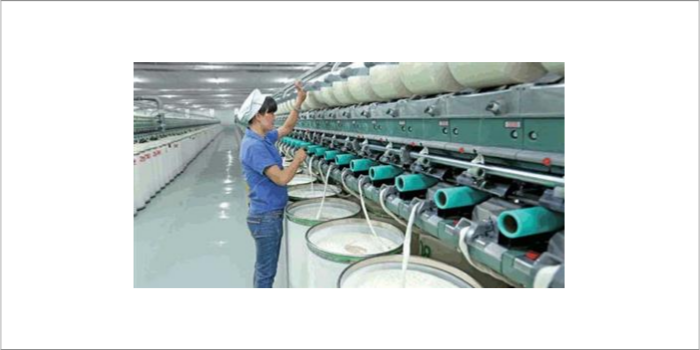
Spinning efficiency!
One of the major factors contributing to spinning efficiency is strength of yarn and if we able to improve this parameter, the net result will be a much better working of the ring spinning machines. The experiment stated below proves that yarn breaks during spinning is much lower when we are able to align the maximum number of fibres along the yarn axis and allow the twist flow up to the nip of the front roller. The fibre fleece is firmly bonded immediately after coming out of the front roller nip and thus the effort in reduction of spinning triangle is paying back.
Yarn strength is the foremost property of yarn, which affects the efficiency of spinning, yarn finishing, weaving, fabric finishing, and wear ability of clothes. The factors affecting yarn strength include the physical and mechanical properties of fibres constituting the yarn as well as the spinning method and technology. Therefore, in the textile industry, yarn strength is the parameter most extensively studied to reduce the end breaks and improve the spinning efficiency in ring spinning frames.
In this chapter, we will discuss about the influence of modified yarn path compare to traditional yarn path when we employ mechanical compacting system. Our study confirms that this out-of-the-box thinking is working well with short stretch model ring frames like Zinser, Toyota and any Chinese models.
Experiment
To determine how the yarn path will effectively influence the twist flow up to the nip of front roll delivery and bind the fibre firmly to improve strength and reduce the hairiness further with mechanical compacting system like RoCos. How this reduction in hairiness will improve the quality of a yarn further. 30s Ne 100 per cent cotton combed hosiery was selected and a controlled study was conducted to compare.
Twist direction: Z twist
Experiment 1: We have conducted the trials in Zinser-321-E ring frame with RoCos premium mechanical compacting system and allow the yarn to run in straight yarn path (regular) and right diagonal (cross) yarn path (fig. 1).
Fig -1
Experiment 2: We have also conducted trials in Rieter G32 ring frame with RoCos premium mechanical compacting system and allow the yarn to run in straight yarn path (regular) and right diagonal (cross) yarn path (fig. 2).
Fig -2
Experiment 2: We have also conducted trials in Rieter G32 ring frame with RoCos premium mechanical compacting system and allow the yarn to run in straight yarn path (regular) and right diagonal (cross) yarn path (fig. 2).
Fig -2
We have collected the samples from both type of ring frame at same stage and tested for quality parameters like U%, CVm, IPI/km, HSF/km, single yarn strength(cN), and tenacity (cN/Tex).
Data were compared and analysed to understand the improvements.
A detailed comparative test results table is given below (fig. 3)
Results and discussions
In the RoCos premium mechanical compacting system, the spinning triangle is reduced with the help of a guide placed in between main front top roll and a delivery top roll (20 mm). However, the spinning triangle is formed on the front delivery top rubber roll (20 mm).
The front delivery top roll in this compacting system is placed in such a way that it is disturbing the yarn path and the untwisted fleece is not fully free to receive the twist immediately after it emerges from the front top delivery roller nip (fig. 4-(i)).
Fig – 4
The full benefit of twist flowing to the closest possible point with reduced triangle formed in this compacting system is obstructed because the spinning triangle is formed on front top rubber roll and angle of delivery.
The right diagonal (cross) yarn path as shown in fig. 4-(ii) is better in allowing the twist to flow easily closer to the nip of the front top delivery roll due to increase in free spinning length and reducing the friction between fibre and front top delivery rubber roll.
Fig – 5
This will align a greater number of fibres to the yarn axis and reducing the hairiness further and in turn this will improve the strength of the yarn. Once the protruding fibres are twisted together, the yarn evenness and IPI level will improve automatically along with yarn strength. The improvement in yarn quality will reduce the ends down and allow spinners to run the ring frame more efficiently.
Benefits
Conclusion
With the Right diagonal (cross) yarn path arrangement, there is an increased concentration of fibres in the right-hand side of spinning triangle due to the increased pre-twisting of fibres. As a result, the pre-twisting effectively binds the fibres into the bulk of the yarn structure, thus reducing yarn hairiness.
Right diagonal yarn path is effective in reducing hairiness for a Z-twist yarn while left diagonal deteriorates hairiness results. Yarn quality improvements and performance of the machine will enhance the performance of the operations and reduce the cost of manufacturing.
Footnote:
The article is authored by Padmanaban P, Senior Partner, Texcoms Textile Solutions.


